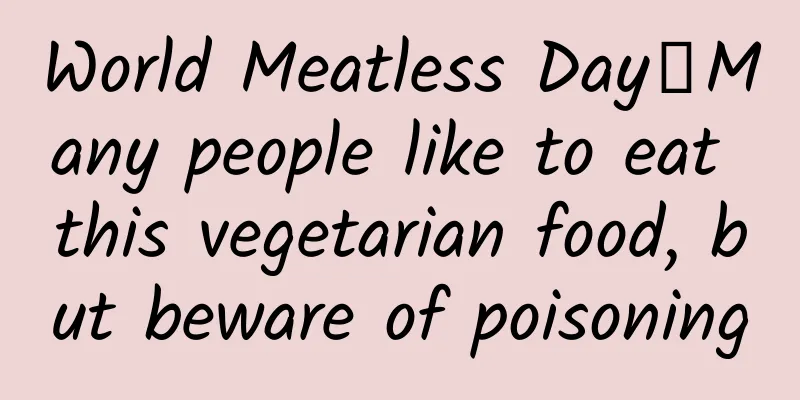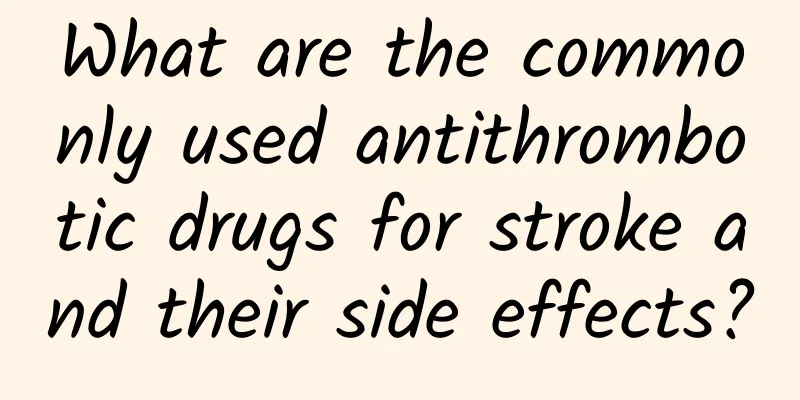World Meatless Day丨Many people like to eat this vegetarian food, but beware of poisoning

|
Since 1985, on March 20th every year, thousands of people around the world have chosen to eat vegetarian food to welcome the arrival of spring. Spring is the season when many fungi grow vigorously. "Eating wild mushrooms correctly can improve health, but eating them incorrectly can cause death" is not an exaggeration. Do you know what kinds of poisonous mushrooms there are? How are they distributed? Regarding the "unreliable methods of identifying poisonous mushrooms", how many have you heard of? Today, we specially invite Director Li Taihui of the South China Microbial Resource Center of the Institute of Microbiology of the Guangdong Academy of Sciences to lead us in scientifically identifying poisonous mushrooms. (ps. At the end of the article, there is also a super complete illustration of poisonous mushrooms from all regions of the country! Be cautious when eating mushrooms in summer, and don't be a "mushroom hero"~) 01/What types of poisonous mushrooms are there? Where are they distributed in our country? The most common and most harmful poisonous mushroom in Guangdong is the deadly Amanita (see the left picture below). Its distribution range is mainly in southern my country, and there are also some in the southwest. So far, it has not crossed the Yangtze River and is basically concentrated in the south. Although the deadly Amanita species does not grow north of the Yangtze River, there are many species of Amanita, some of which can grow in the north. ▲Characteristics of Amanita (left: deadly Amanita, right: Amanita suspensa with ring deformation) (Photo source: Li Taihui) ▲Statistics of mushroom poisoning incidents in Guangdong from January to September 2021 (Source: Li Taihui) 90% of deaths from poisonous mushroom poisoning worldwide are caused by Amanita. In China, in addition to Amanita, Russula subsparsely gilled is also very deadly. This Russula subsparsely gilled is more common in Hunan, Zhejiang, Central China, and Northern Guangdong. ▲Characteristics of Russula subsparsely gilled, whose death toll is second only to Amanita (Source: "Identification of Poisonous Mushrooms and Prevention of Poisoning") 02/What should you pay attention to when picking and eating mushrooms? If you are not sure about the quality of the mushrooms you forage, you must not eat them. If you have eaten a certain type of mushroom in your hometown and see similar-looking mushrooms somewhere else, you must not eat them, because although they look similar, they may be different species. Don't take risks at this time. The best way is not to eat wild mushrooms. I advise everyone to buy cultivated mushrooms in the market, which may be safer. Now the production of mushrooms has also increased, and many cultivated mushrooms are very delicious. If you really want to eat it, you have to go to some regular restaurants, or areas that specialize in eating this kind of mushroom. For example, we have a kind of lychee mushroom in Guangdong, which grows specifically on termite nests. This mushroom is also called ant nest mushroom. It is edible, and you must identify the correct variety before eating it. 03/How to deal with mushroom poisoning incidents? In Guangdong and even other provinces, anyone who suffers from mushroom poisoning will come to our organization for help. We first need the patient to take the initiative to send us samples or photos, and then we can determine what kind of mushroom it is based on the materials he sent. If the sample is no longer available, we will send someone to collect it again on site, and after confirmation by the patient or his relatives, we will tell the hospital how to treat it. Because there are many types of mushrooms and many types of poisoning, the fastest way is to analyze which type of mushroom the patient has accidentally eaten, to determine what toxins are present, and then to determine how to treat it. Usually when we receive poisoning news, it is 12 o'clock in the evening, because the patient may have eaten poisonous mushrooms for 6 hours before serious symptoms appear. Of course, some people do not react immediately after eating mushrooms, while others die from severe allergic reactions. ▲Mushroom poisoning types - characteristics of acute liver damage (Source: Li Taihui) ▲Characteristics of rhabdomyolysis poisoning (Source: Li Taihui) In addition, there are different types of poisoning: another dangerous type of Amanita poisoning is acute renal failure, characterized by oliguria or anuria, and eventually renal failure to death; Pleurotus eryngii causes hemolytic poisoning; Glechoma tuberculosis causes photosensitivity dermatitis; Pleurotus eryngii causes gastroenteritis poisoning; Psilocybe edulis causes hallucinations, causing symptoms such as self-distortion and mental confusion... 04/How to correctly judge whether mushrooms are poisonous? Many people search online for how to identify poisonous mushrooms. Some answers tell us to use color to identify them. In fact, this is incorrect. Red mushrooms can also be divided into poisonous and non-toxic. Some seemingly harmless mushrooms may be the most poisonous. These incorrect identification methods are still circulating on the Internet. As scientists, we have the responsibility to stand up and dispel rumors and suppress these false information. Myth 1 Brightly colored mushrooms are poisonous Wrong! Whether the mushroom is brightly colored or not has no direct relationship with whether it is poisonous. Not all beautiful fungi are poisonous, such as the famous edible fungus - Amanita phalloides. On the contrary, many mushrooms that look "plain" may contain highly poisonous substances. ▲The brighter the mushroom, the more poisonous it is (Source: "Identification of Poisonous Mushrooms and Prevention of Poisoning") Myth 2 If mushrooms are cooked with silverware, they turn black and are poisonous. No! There is no scientific basis for this statement. Mushroom toxins do not react with silverware, garlic, ginger, etc. Myth 3 Insects and maggots are not poisonous Wrong! Many people think that as long as other creatures such as insects and maggots do not die after eating mushrooms, it means that mushrooms are not poisonous. In fact, the famous poisonous mushroom, Amanita phalloides, is often eaten by slugs, and many poisonous species can also produce maggots. In addition, some mice will not be poisoned after eating poisonous mushrooms because their stomachs may have a barrier function. However, if the toxins are injected into their abdominal cavity, muscles, and blood vessels, they will cause poisoning. Therefore, it is not possible to judge whether the poison is poisonous after eating animals, and it is even more impossible to judge based on insects. Myth 4 Injured, discolored, or with toxic discharge No! This is not absolute. For example, the injured parts and milky juice of pine milk mushrooms and red milk mushrooms turn blue-green, but they are all delicious edible mushrooms. (Source: "Enping Release" public account) Myth 5 Toxic on wet or livestock feces, non-toxic in clean areas under pine trees Wrong! Although a large proportion of these fungi are poisonous, this is not always the case. Many poisonous fungi do not have specific characteristics. For example, the common and ordinary-looking Omijima agaricus in the south is poisonous. In recent years, cases of "Omijima agaricus poisoning" have occurred frequently in Guangdong, Guangxi and other places. In 2023 alone, there were more than ten known cases of "Omijima agaricus poisoning". South China, Yunnan, North China, Northeast China Illustrations of Common Poisonous Mushrooms |
<<: How does general anesthesia affect children?
>>: Be alert to these 4 early "help signals" of chronic nephritis
Recommend
How to treat nausea and vomiting during menstruation
Many women have experienced nausea and vomiting d...
Beware of depression, it is a disease, not pretentiousness!
As the number of celebrities’ deaths from depress...
eMarketer: Tencent is using AI and retail to drive WeChat growth
199IT original compilation As growth in the numbe...
World Hemophilia Day | Care for "glass people" and make love not rare!
April 17, 2024 is the 36th "World Hemophilia...
Is there anyone who knows how to eat pork better than people from Northeast China?
When you mention Northeastern cuisine, what image...
Side effects of endocrine therapy for breast cancer
In fact, if breast cancer is discovered in time i...
Can I detect pregnancy in one month?
There are no obvious changes in a woman's bod...
Women with cold uterus like to wear this thing
The characteristics of women with uterine cold re...
How long does a pregnant woman lie flat before the fetus suffers from hypoxia?
Generally, doctors advise women to sleep on their...
Reasons for prolonged absence of menstruation
Irregular menstruation is normal for adolescent g...
Can vegetable drinks really help you lose weight and detoxify? Here comes the truth
Recently, kale drinks have become popular in tea ...
Why is there black stuff between teeth?
Which one is more likely to win the favor of othe...
Fudan University Research: Sleeping too much or too little affects health, 7 hours is just right | World Sleep Day
As one of the basic needs of human health, the im...
Can I eat bamboo shoots during confinement?
Bamboo shoots are loved by many people. They have...
Love is not "rare" series - Peking Union Medical College doctors explain Turner syndrome
"Popular Science of Medical Science with Cot...









